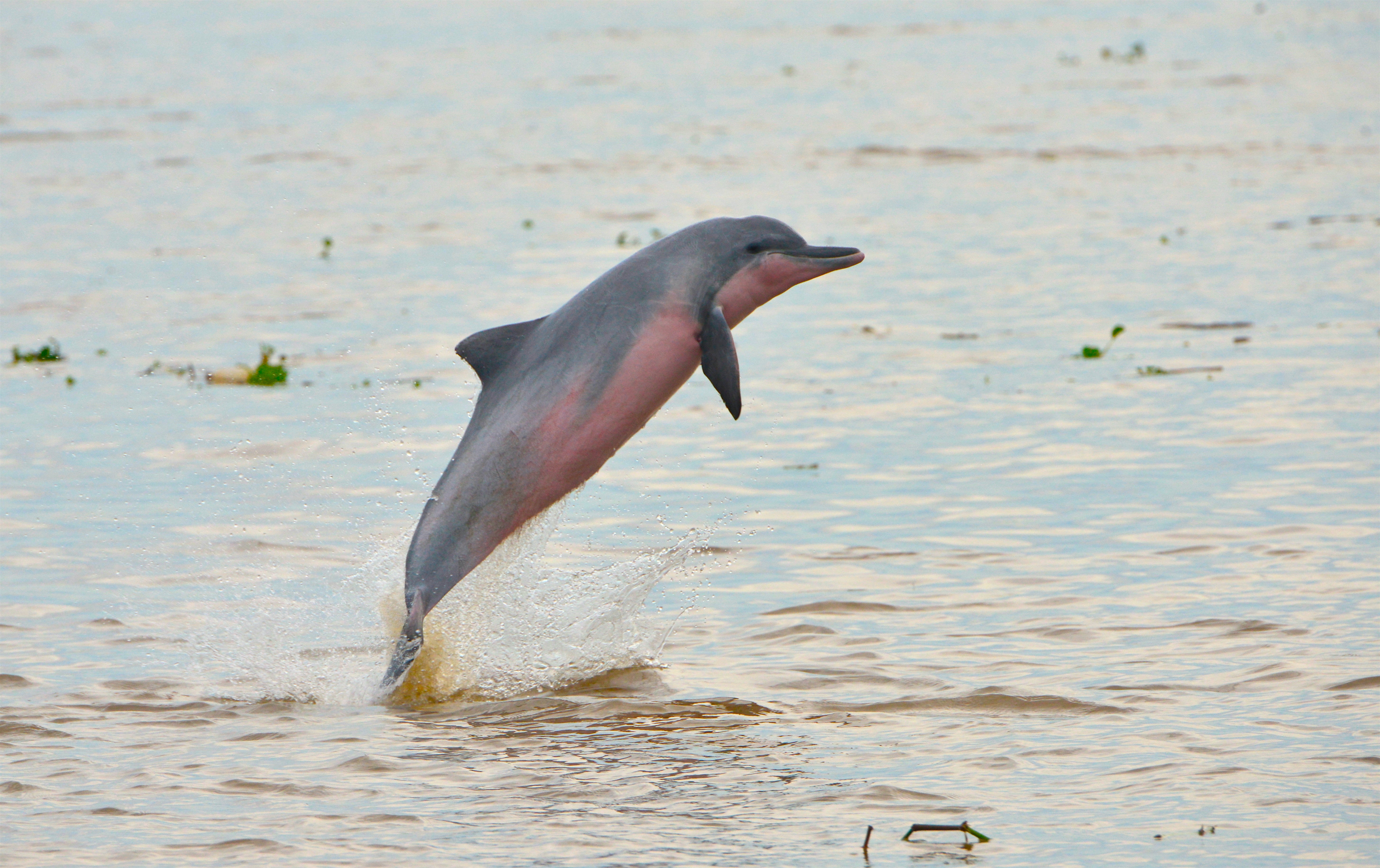Conservationists: Bisons revive, freshwater dolphins dwindle
A leading conservation group uniting governments and civil society says all four known freshwater dolphin species are now threatened with extinction, after newly discovered information on the tucuxi in the Amazon river system showed it too is endangered

Your support helps us to tell the story
From reproductive rights to climate change to Big Tech, The Independent is on the ground when the story is developing. Whether it's investigating the financials of Elon Musk's pro-Trump PAC or producing our latest documentary, 'The A Word', which shines a light on the American women fighting for reproductive rights, we know how important it is to parse out the facts from the messaging.
At such a critical moment in US history, we need reporters on the ground. Your donation allows us to keep sending journalists to speak to both sides of the story.
The Independent is trusted by Americans across the entire political spectrum. And unlike many other quality news outlets, we choose not to lock Americans out of our reporting and analysis with paywalls. We believe quality journalism should be available to everyone, paid for by those who can afford it.
Your support makes all the difference.A leading conservation group uniting governments and civil society says all four known freshwater dolphin species are now threatened with extinction, after newly discovered information on the tucuxi in the Amazon river system showed it too is endangered.
The finding from the International Union for Conservation of Nature comes as its latest “Red List” of threatened species, released Thursday, also showed that populations of the European bison — Europe’s largest land mammal — have improved, even as the list of extinct species overall has continued to expand.
“The European bison and 25 other species recoveries documented in today’s IUCN Red List update demonstrate the power of conservation,” said Dr. Bruno Oberle, IUCN’s director-general.
Still, the conservation group said 31 species have been declared extinct in the latest of its regular updates of the list, including three Central American frog species and 15 freshwater fish species endemic to a single lake in the Philippines. A South China Sea shark, last seen in 1934 and only formally described last year, is thought to be “possibly extinct.”
Craig Hilton-Taylor, head of the IUCN red list, said the impact of human activity was a driver for many species nearing extinction.
“All of these things are down to human activities, whether it’s direct hunting or fishing or harvesting of the species, to introducing invasive species, changing habitats to agriculture, urbanization, climate change,” he said in a video interview. “The human footprint is everywhere.”
The tucuxi, a small gray dolphin found in the Amazon River system, is now listed as “endangered.” Its numbers have been severely depleted by human activity, including fishing gear, the damming of rivers and pollution. Previously there wasn't enough information to determine its status.
The Gland, Switzerland-based group cites three other freshwater dolphin species — the Amazon river dolphin, the South Asian river dolphin and the Yangtze River dolphin in China, though it may already be extinct — as threatened, along with the Yangtze finless porpoise, IUCN spokesman Matthias Fiechter said.
IUCN says nearly 129,000 species are on its list, including 35,765 threatened with extinction. The “red list” breaks down threatened species into vulnerable, endangered and critically endangered categories -- the last of these meaning those closest to extinction.
The European bison is making gains — more than tripling its population since 2003 to more than 6,200 last year -- because of conservation management, IUCN said.
Once widespread across Europe several centuries ago, the continent’s largest land mammal was hunted, and its numbers declined dramatically.
After World War I, the remaining population of the horned animals — close cousins of the North American bison — was hunted out, leaving the species extinct in the wild and only surviving in captivity. Reintroduction efforts began in the 1950s, and today 47 free-ranging herds now roam the continent.
“There’s a huge push across Europe, what they call re-wilding, trying to restore habitats that have been transformed by people back into wild habitat again and bring back a lot of these species that have been lost,” Hilton-Taylor said.
IUCN, which was founded in 1948, brings together more than 1,400 member organizations and 15,000 experts and bills itself as one of the world’s largest environmental networks.
___
James Brooks reported from London.